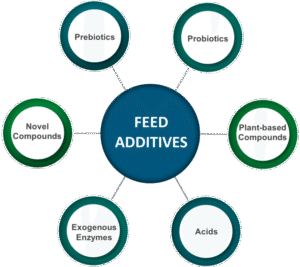5. Cobalt
Role of Cobalt
• Cobalt is required by microorganisms in the rumen for the synthesis of vitamin B12.
• Cobalt acts as an activating ion in certain enzyme reactions.
Clinical signs
• Cobalt deficiency causes vitamin B 12 deficiency in ruminants.
• Wasting disease or coast disease or Pining or Enzootic marasmus characterized by decreased feed intake, emaciation, loss of body weight due to wasting of skeletal muscles, decreased growth rate and fatty degeneration of liver.
Requirement
0.07 ppm in the DM – for dairy cattle
Thank you for reading. Don't forget to subscribe & share!
Source
• salt licks
• mineral mixtures or
• By placing cobalt oxide bullet in the ventral sac of rumen using a cobalt gun pellets.
6. Selenium
Role of Selenium
• Selenium is a component of gluthathione peroxidase, an enzyme, protecting cell membrances from oxidative damage.
• Selenium has a sparing effect on vitamin E by ensuring normal absorption of the vitamin.
• Selenium also reduces the amount of vitamin E required to maintain the integrity of lipid membranes and aids the retention of Vitamin E in plasma.
Clinical signs
• The most frequent and the most important manifestation of Selenium deficiency in farm animals is muscle degeneration (myopathy).
• The myopathy primarily affects the skeletal muscles and the affected animals have weak leg muscles, a condition manifested by difficulty in standing and after standing, a trembling and staggering gait. The animals are unable to rise and weakness of the neck muscles prevents them from raising their heads. This condition known as white muscle disease.
Selenium toxicity
• Animals grazing chronically some species of plants (Astragalus racemosa) that grow in seleniferous areas contain very high levels of selenium named as Alkali disease and blind staggers.
• Acute poisoning, which results in death from respiratory failure, can arise from sudden exposure to high selenium intakes.
7. Thyroid
Role of Thyroid
• iodine plays an important role in the synthesis of the two hormones, triiodothyronine and tetraiodothyronine (thyroxine) produced in the thyroid gland.
• The thyroid hormones accelerate reactions in most organs and tissues in the body, thus increasing the basal metabolic rate, accelerating growth, and increasing the oxygen consumption of the whole organism.
Clinical signs
• The main indication of deficiency is an enlargement of the thyroid gland, termed endemic goitre, and is caused by compensatory hypertrophy of the gland.
• The thyroid being situated in the neck, the deficiency condition in farm animals manifests itself as a swelling of the neck, ‘big neck’.
• Reproductive abnormalities are one of the most outstanding consequences of reduced thyroid function; breeding animals deficient in iodine give birth to hairless, weak or dead young.
Requirement
• Cattle 400- 800 micro gram /day
Supplementation
• The richest sources of this element are foods of marine origin like seaweeds, fish meal etc.
• In areas where goiter is endemic, precautions are generally taken by supplementing the diet with the element, usually in the form of iodized salt.
8. Fluorine
Excess – Clinical signs
• Fluorine is a very toxic element, with ruminants being more susceptible, causes a condition called as fluorosis. There is dental pitting and wear, leading to exposed pulp cavities.
• Further increases in fluorine cause depression of appetite, lameness and reduced production.
• Bone and joint abnormalities also occur, probably owing to ingested fluorine being deposited in the bone crystal lattice as calcium fluoride.
• The commonest sources of danger from this element are:
i. Fluoride-containing water,
ii. Herbage contaminated by dust from industrial pollution









